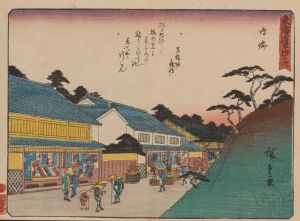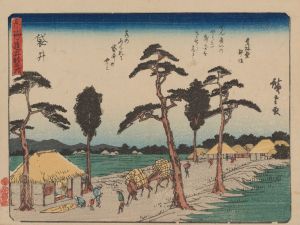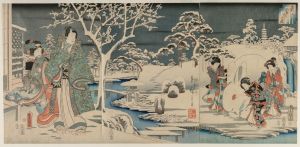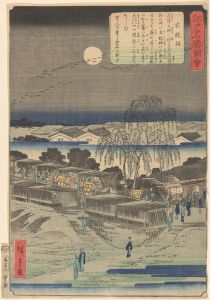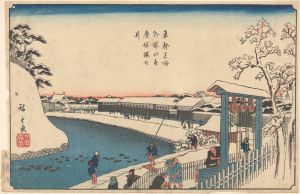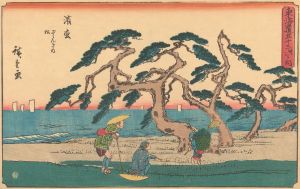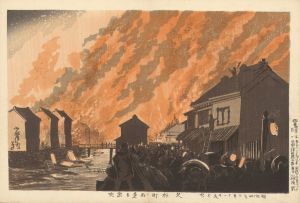
Mokuboji Uki Mount Fuji Oka Ya Han
A hand-painted replica of Andō Hiroshige’s masterpiece Mokuboji Uki Mount Fuji Oka Ya Han, meticulously crafted by professional artists to capture the true essence of the original. Each piece is created with museum-quality canvas and rare mineral pigments, carefully painted by experienced artists with delicate brushstrokes and rich, layered colors to perfectly recreate the texture of the original artwork. Unlike machine-printed reproductions, this hand-painted version brings the painting to life, infused with the artist’s emotions and skill in every stroke. Whether for personal collection or home decoration, it instantly elevates the artistic atmosphere of any space.
Andō Hiroshige, a renowned Japanese ukiyo-e artist of the Edo period, is celebrated for his landscape prints and his ability to capture the transient beauty of nature. One of his notable works is "Mokuboji Uki Mount Fuji Oka Ya Han," which exemplifies his mastery in depicting serene landscapes and his innovative approach to composition and color.
Hiroshige was born in 1797 in Edo, now Tokyo, and began his artistic career as an apprentice to the ukiyo-e master Utagawa Toyohiro. He became a prominent figure in the genre of ukiyo-e, which translates to "pictures of the floating world," a style that flourished from the 17th to the 19th century in Japan. Ukiyo-e artists primarily focused on subjects such as kabuki actors, beautiful women, and landscapes, with Hiroshige being particularly noted for the latter.
"Mokuboji Uki Mount Fuji Oka Ya Han" is part of Hiroshige's extensive body of work that often features Mount Fuji, a sacred symbol in Japanese culture and a popular subject in Japanese art. Hiroshige's fascination with Mount Fuji is evident in many of his series, including the famous "Thirty-six Views of Mount Fuji," which was inspired by Katsushika Hokusai's earlier series of the same name.
In this particular work, Hiroshige employs his signature style of using vibrant colors and a keen sense of perspective to create a harmonious and tranquil scene. The composition typically includes a view of Mount Fuji, often depicted in the background, serving as a majestic and enduring presence. Hiroshige's use of color and light captures the changing moods of the landscape, reflecting the seasons and times of day.
Hiroshige's landscapes are characterized by their poetic quality and attention to detail. He often included elements such as trees, rivers, and human figures, which add a sense of scale and life to the scene. His ability to convey the atmosphere and emotion of a place is a hallmark of his work, inviting viewers to experience the beauty and tranquility of the Japanese countryside.
The influence of Hiroshige's work extended beyond Japan, particularly impacting Western artists in the 19th century. His innovative compositions and use of color inspired Impressionist and Post-Impressionist painters, such as Vincent van Gogh and Claude Monet, who admired the simplicity and elegance of Japanese prints.
Hiroshige's legacy continues to be celebrated today, with his works held in prestigious collections around the world. His ability to capture the essence of nature and the fleeting moments of beauty in everyday life remains a testament to his skill and artistic vision. "Mokuboji Uki Mount Fuji Oka Ya Han" is a reflection of Hiroshige's enduring contribution to the art of ukiyo-e and his lasting impact on the world of art.






